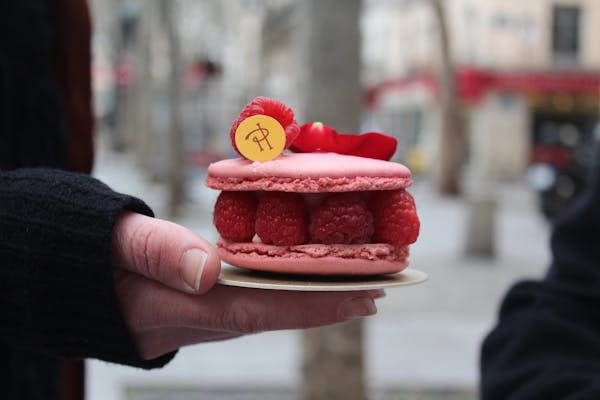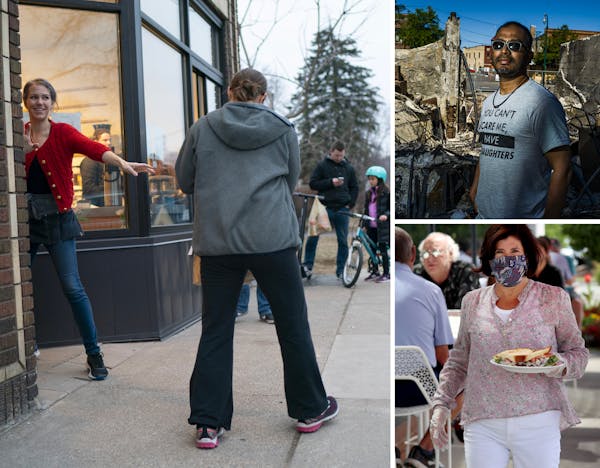It was the end of April, we were barely a month into the pandemic and the news on the restaurant front was sobering.
More precisely, it was a bombshell: Eric Dayton, co-owner of the Bachelor Farmer, announced that his restaurant — which had been idle since March 17, when Gov. Tim Walz had shut down all indoor dining — was never going to reopen.
"I do not see a viable path forward," Dayton said in a statement.
I read Dayton's e-mail a second time, and then a third, because its message seemed unbelievable.
Wasn't the Bachelor Farmer one of those forever restaurants, destined to help define the region's gastronomic ambitions for years to come? In late January I'd assessed the work of its remarkable chef, Jonathan Gans, with a four-star review. If this top-performing establishment — one of the state's defining restaurants — wasn't going to weather the storm, what could?
That question was answered, grimly, in the weeks and months that followed, as we said goodbye to far too many restaurants, including far too many at the top of the critical food chain.
The toll included three more four-star restaurants — Bellecour, Butcher & the Boar, In Bloom — and five 3 ½-star hot spots: Octo Fishbar, Bardo, Popol Vuh, the Surly beer hall and pizzeria and Grand Cafe, which lost its 38th-and-Grand home.
All were gone, their business plans at odds with the realities of reduced seating capacity and/or a takeout-only existence. The loss of this fragile culinary ecosystem — economic, cultural, personal — was and continues to be unfathomable. And deeply distressing, and depressing.
We'll never enjoy another popover at the Lakeshore Grill, or celebrate a birthday at Vivo Kitchen, or flirt over polenta-coated calamari at Costa Blanca Bistro, or marvel at the fried chicken at 4 Bells, or grab a restorative skyway lunch at Allie's Deli.
It's staggering to consider the years of Minnesota history that have been erased by the annis horribilis that is 2020. The cumulative loss represented by the demise of just these 10 restaurants — Curran's, Fuji Ya, Little Tijuana, Granny's Donuts, Purple Onion Cafe, the Lyn-Lake outlet of the Egg & I, Herkimer Pub & Brewery, Pazzaluna, Chino Latino and Roasted Pear — adds up to 361 years of dining experiences.
Particularly heartbreaking is the roster of restaurants that were destroyed during the violence following the police killing of George Floyd: Town Talk Diner & Gastropub, Gandhi Mahal, Addis Ababa, El Nuevo Rodeo, Bole Ethiopian Restaurant, Olympic Cafe and Seafood to Go (along with fast-fooders Arby's, Domino's Pizza, Popeyes, Subway and Wendy's), and the others that were heavily damaged, including Midori's Floating World Cafe, Mama Safia's Kitchen and Hop Wong.
According to data compiled by the Star Tribune, 267 Twin Cities restaurants experienced riot-related damage, a number higher than any other business category. Minnesota has never witnessed such previously unimaginable destruction. May we never see it again.
The loss is everywhere, both literal and ephemeral. When I walk or bike through neighborhoods (my new form of going to the gym) and peek into the windows of restaurants, I wonder if they'll be there next month, or next summer.
One day in late August, I realized I was steering clear of the North Loop because I didn't want to be reminded of the Bachelor Farmer's demise. And I didn't want to think about the abrupt end of another favorite, Moose & Sadie's.
This counter-service operation was a 3rd Avenue pioneer long before the neighborhood landed its trendy North Loop appellation. My affection for the place reaches so far back that after I finally did the math, I realized that I'd been a customer for nearly half of my life.
M & S began its long and illustrious life as a coffeehouse, predating the Starbucks-Caribou boom. In 2005, owner Peter Kirihara built an honest-to-goodness kitchen and partnered with the gifted Susan Muskat, who turned out hearty, lovingly prepared breakfasts and lunches and a seemingly bottomless array of classic baked goods.
I don't know that I ever saw Kirihara stand still for more than 15 seconds; that's the kind of work ethic he brought to his business on a daily basis. He also had a knack for hiring staffers who embodied both hospitality and hustle.
Those winning traits also applied to his own family. It was always a Grade-A visit when I'd have the fortune of sharing a quick conversation with Kirihara's mother, Lucy, an irrepressible whirlwind of energy and grace who dropped in on a regular basis to keep her son's sunny dining room in spick-and-span order.
Because the prices were so affordable, I never spent a lot of money at Moose & Sadie's; even the staunchest of regulars couldn't have dropped a significant amount of cash in the place.
But I always felt welcome when I walked in the door, and I inevitably left feeling happy. Who could ask for more in a restaurant? I will treasure those memories.






